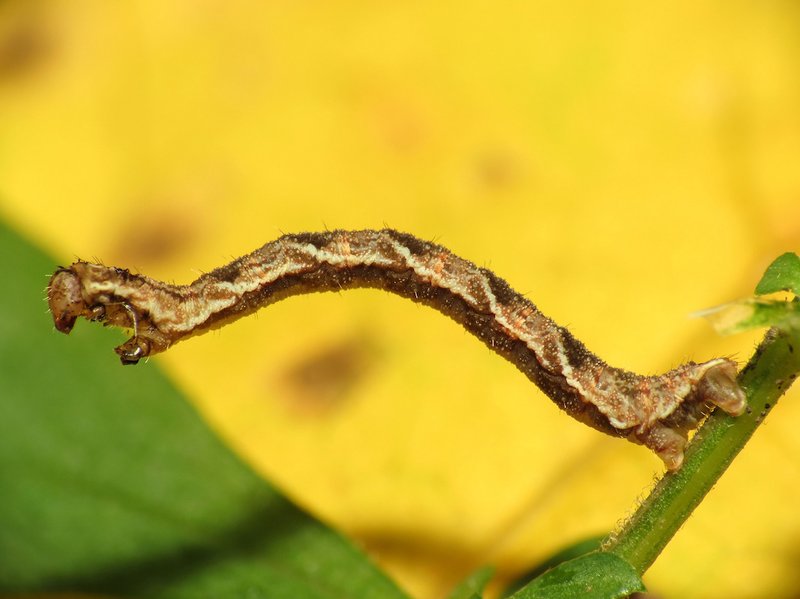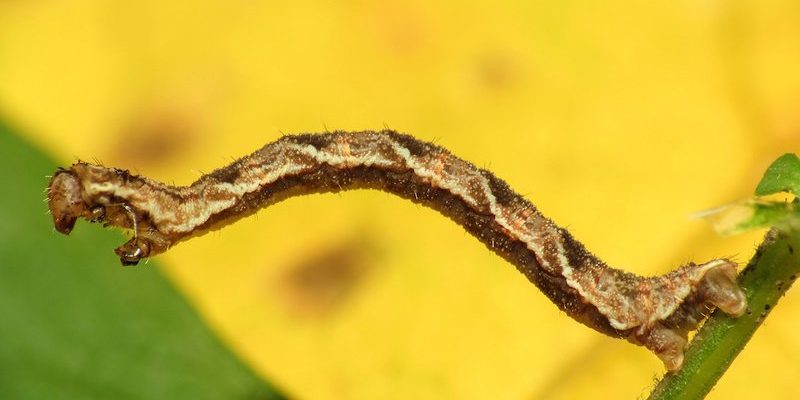
Inchworms aren’t just a curiosity of the backyard; they play a significant role in the ecosystem. They’re the larval stage of moths, and during certain times of the year, their populations can explode. It’s like a blockbuster movie premiere—great at first but can cause chaos if not managed properly. Understanding what causes these outbreaks can help you appreciate them more and prepare if they invade your garden or yard. So, grab your coffee, and let’s explore the fascinating triggers behind inchworm outbreaks!
What Are Inchworms Anyway?
Before we get into the nitty-gritty of outbreaks, it’s helpful to know exactly what inchworms are. Inchworms are the larvae of various moth species, and they get their name from their unique way of moving. They “inch” along, pulling their hind end up to their front end, creating a looping motion. This method of travel is not just adorable; it’s also a clever way to evade predators.
There are several species of inchworms, but they all share a common behavior: they tend to blend into their surroundings. Their colors can range from green to brown, helping them camouflage perfectly against leaves. This ability to hide from predators is one of the reasons they can explode in numbers during certain seasons.
You might be wondering why we should care about inchworms. Well, they play a critical role in the food chain. Birds, insects, and even small mammals rely on them as a food source. Plus, they help recycle nutrients back into the soil, making them essential for a balanced ecosystem.
Factors Behind Inchworm Outbreaks
So, what exactly causes these little critters to have their seasonal outbreaks? There are a few key factors that come into play.
Firstly, climatic conditions are crucial. Inchworms thrive in mild temperatures and high humidity. As spring approaches, warmer weather helps trigger their growth cycle. This is when they come out to feed, leading to an increase in their population. If you’ve ever noticed a surge in inchworms after a warm, wet spell, you’re likely witnessing a seasonal outbreak in action.
Secondly, the availability of food plays a significant role. Inchworms primarily feed on the leaves of trees, especially deciduous species. If there’s an abundance of fresh foliage, the inchworm population can boom. Think of it like an all-you-can-eat buffet—if it’s there, they’ll take advantage!
Lastly, predator populations are another influencing factor. Inchworms have natural enemies, including birds and parasitic wasps. When these predators are reduced due to environmental changes or diseases, inchworm populations can increase unchecked.
How Seasonal Changes Influence Inchworms
Seasonal changes have a profound effect on inchworm behavior and population dynamics. As winter fades away and spring emerges, inchworms begin to hatch from their eggs. This is often when you’ll see their numbers swell.
The warmth of spring stimulates their metabolism, waking them from their winter dormancy. This is similar to how we feel energized after a long winter—suddenly, everything feels possible! With the right conditions, inchworms can complete multiple life cycles in a single growing season.
Additionally, the timing of trees budding can influence when inchworms appear. If trees start to leaf out early due to a warm spell, inchworms will follow suit, ready to feast on fresh leaves. This synchronization between plant growth and insect activity is a beautiful example of nature’s timing.
As temperatures rise, it’s not uncommon to see inchworms actively feeding during the day, making them more visible. Their presence can signal the changing of the seasons, often marking the arrival of warmer weather.
The Role of Predators in Inchworm Populations
While inchworms can multiply quickly, their numbers are kept in check by various predators. Birds are perhaps their most well-known enemy. Many bird species rely on inchworms as a high-protein food source, especially in spring when they’re feeding their chicks.
Interestingly, some birds have developed specific hunting techniques to capture inchworms. They might perch on a branch and watch for the telltale inching motion, making them quite adept at snatching these little guys off leaves.
Other natural enemies include parasitic wasps, which lay their eggs inside inchworm larvae. When the eggs hatch, the wasp larvae consume the inchworm from the inside out. Ouch! Though it’s harsh, this process helps prevent inchworm populations from skyrocketing.
Without these natural checks and balances, inchworm outbreaks could lead to significant defoliation in forests and gardens. So, while they can be a nuisance, they also play an essential role in maintaining ecological balance.
Tips for Managing Inchworm Outbreaks
If you find yourself facing an inchworm outbreak in your garden or yard, don’t worry—there are ways to manage them effectively.
First, consider using physical barriers. You can cover young plants with floating row covers or fine mesh to keep inchworms from reaching the leaves. This is especially helpful during the early part of their life cycle when they’re most vulnerable.
Second, monitoring is key. Keep an eye on inchworm populations as spring approaches. Early detection can help you manage them before they do too much damage. You might want to look for signs of leaf damage or the presence of these critters on your plants.
Lastly, if their numbers become overwhelming, you can resort to natural insecticides made from *Bacillus thuringiensis* (Bt). This bacteria is safe for most beneficial insects and can effectively target inchworms. Just be sure to follow the label instructions for safety.
When Inchworms Become a Problem
While inchworms are a natural part of many ecosystems, sometimes they can cause real problems, especially when their populations explode. A massive gathering of inchworms can lead to defoliation, which weakens trees and plants, making them susceptible to diseases.
In orchards, a significant inchworm outbreak can result in reduced fruit yields. This is because trees lose their leaves and, thus, their ability to photosynthesize effectively. As a result, fruit-bearing trees may struggle to produce high-quality fruit.
It’s important to recognize these potential issues early on. If you see a lot of inchworms in your area, consider taking preventative action—this might include improving tree health through proper pruning, watering, and fertilizing. Healthy trees can withstand some defoliation much better than stressed ones.
Inchworms may seem like a small part of nature, but they can have a big impact during their seasonal outbreaks. Understanding what triggers these events allows us to appreciate their role in the ecosystem while also managing their presence effectively in our gardens.
Just like any other creature, inchworms play their part in the circle of life, and knowing more about them helps us coexist with nature. So, the next time you’re out in your yard and see those little green inching forms, you’ll not only know what they are but also understand the fascinating reasons behind their seasonal appearances. Keep an eye out, and you might just enjoy watching this unique part of nature’s rhythm!

